Celebrating 300 Years of Capability Brown
click on the image below
I have the benefit of living in a suburb with plenty of tree cover. In fact the view outside onto the streets is almost as if the street is a parkland. The concept that any suburb should have an abundance of trees and shrubs and associated bio-diversity is simply so logical that one wonders why would anyone think otherwise.
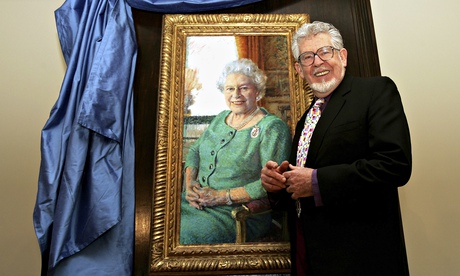 The debate over what different people, institutions and township are doing with their formerly treasured artworks by Rolf Harris has been sad to watch. This style of artwork was always more of a populist marketing campaign. His art was and remains simplistic and very ordinary at best.
The debate over what different people, institutions and township are doing with their formerly treasured artworks by Rolf Harris has been sad to watch. This style of artwork was always more of a populist marketing campaign. His art was and remains simplistic and very ordinary at best.
I was a little shocked when he was commissioned to paint a portrait of the Queen. Continue reading Unloved Art
 Our public galleries have wonderful collections. Collection exhibitions are often overlooked by the public as the marketing foolishly concentrates on the block busters and special exhibitions. This is a shame as the collection exhibitions are wonderful.
Our public galleries have wonderful collections. Collection exhibitions are often overlooked by the public as the marketing foolishly concentrates on the block busters and special exhibitions. This is a shame as the collection exhibitions are wonderful.
I welcomed the opportunity to visit Harvest: Art, Film + Food. To see this mix of art was indeed a welcomed experience. Continue reading Harvest at GOMA
 France takes a stand against the giant Amazon in an effort to safeguard its own culture of having viable bookstores. Good news for the French. Hope other are watching. Again, it may be time to shop anywhere but at Amazon. Click here.
France takes a stand against the giant Amazon in an effort to safeguard its own culture of having viable bookstores. Good news for the French. Hope other are watching. Again, it may be time to shop anywhere but at Amazon. Click here.
———————————
Paul Costigan, 29 June 2014
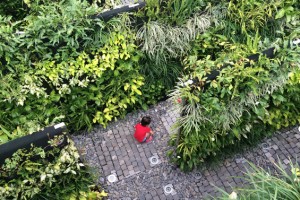 I came across this garden when looking through the short listed projects for the World Architecture Awards to be announced in Singapore in early October 2014. At first I was very impressed with the technical qualities and that it was a form of the old fashioned maze, but done with plants in a more sustainable manner.
I came across this garden when looking through the short listed projects for the World Architecture Awards to be announced in Singapore in early October 2014. At first I was very impressed with the technical qualities and that it was a form of the old fashioned maze, but done with plants in a more sustainable manner.
Continue reading 2014 World Architecture Festival Awards: Vertical Garden
The centre of Melbourne has a tremendous network of laneways. Many are well established as alternate routes to the main streets. Many of the laneways have cafes, and in more recent years, many have become havens for all manner of street art.
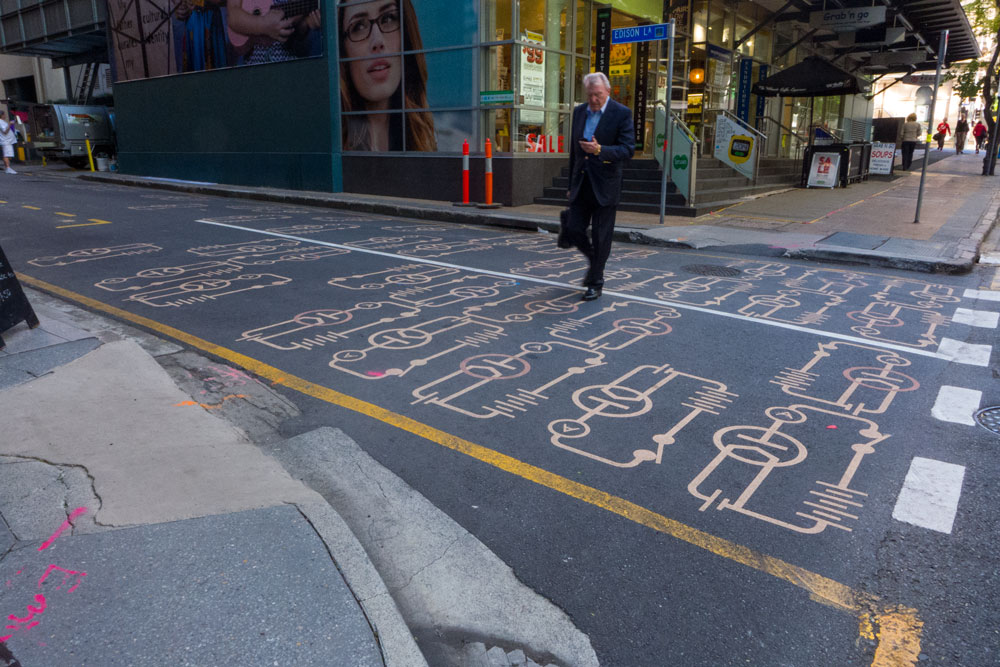
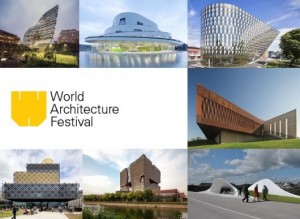 The 2014 World Architecture Festival Awards shortlisted projects have been listed online. It makes for an interesting read.
The 2014 World Architecture Festival Awards shortlisted projects have been listed online. It makes for an interesting read.
I have provided two links below. One with categories only – which means you have click-through to see more. The other is the full list. A number of Australian projects have been listed, including The National Botanic Gardens – these I have reviewed (click here) , so I will say no more.
It has been a long puzzle of mine as to just what makes an architecture project an award-winning project. I know that it cannot be just who sits on the award jury and who knows who, so it must be something else.
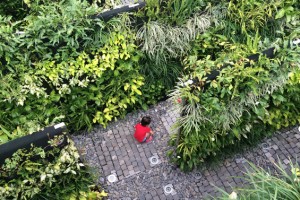 I came across this garden when looking through the short listed projects for the World Architecture Awards to be announced in Singapore in early October 2014. At first I was very impressed with the technical qualities and that it was a form of the old fashioned maze, but done with plants in a more sustainable manner.
I came across this garden when looking through the short listed projects for the World Architecture Awards to be announced in Singapore in early October 2014. At first I was very impressed with the technical qualities and that it was a form of the old fashioned maze, but done with plants in a more sustainable manner.
I later searched for more on this and realised that it was very much a decorative maze in a resort in Vietnam. The resort being a re-use of a former French colonial resort. Below I have given a report on this garden from World Landscape Architecture.
 Guest Relations at Jan Manton Art
Guest Relations at Jan Manton Art
I had a chance last week to see Guest Relations, the exhibition of Robyn Stacey in Brisbane. As I had pointed out in my earlier review, it is a show not to be missed.
Click here for my former post.
Click here for words in Art Almanac
Click here for Jan Manton Art.
Click here for Stills Gallery, Sydney.
——————————————-
Paul Costigan, 6 July 2014
A video, about six and half minutes, introducing the concept of valuing landscape and the link to liveable settlements.
——————————–
see also – Sustainable Sites Initiative
——————————-
Paul Costigan, 24th June 2014
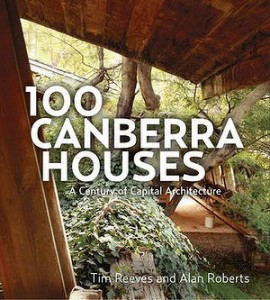 This book about housing in Canberra is welcomed by those amongst us who would love to see more good design in the provision of houses in Canberra. Much of Canberra, as with most places internationally, is presently being devastated with loads of new badly designed suburbs as well as very awful blocks of cheaply rendered apartments being foisted on the older inner suburbs. The authors of this book are to be congratulated for illustrating that the architecture for residential properties can be something to be enjoyed.
This book about housing in Canberra is welcomed by those amongst us who would love to see more good design in the provision of houses in Canberra. Much of Canberra, as with most places internationally, is presently being devastated with loads of new badly designed suburbs as well as very awful blocks of cheaply rendered apartments being foisted on the older inner suburbs. The authors of this book are to be congratulated for illustrating that the architecture for residential properties can be something to be enjoyed.
How the liveability of our cities means designers and planners working with the landscape rather than against it.
A video, about six and half minutes, introducing the concept of valuing landscape and the link to liveable settlements.
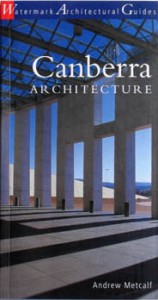 I picked up this book quiet a while ago but it is only now that I have had time to look through it. I am glad I did, as after reading through quite a bit of it, I have become more aware that Canberra has a reasonable amount of good and notable architecture.
I picked up this book quiet a while ago but it is only now that I have had time to look through it. I am glad I did, as after reading through quite a bit of it, I have become more aware that Canberra has a reasonable amount of good and notable architecture.
I have a quiet interest in good architecture and have spent some energies complaining about the current crop of badly designed houses and commercial buildings being thrust onto Canberra. Residents have despaired that good design in our civic areas and suburbs has become a thing of the past.
The Prime Minister and Solar and how good behaviour starts in your own backyard.
It well established that how people behave in their own back yards normally reflects their attitude to the world outside their household. Our Prime Minister is having his house, The Lodge, refurbished. This was well overdue.
 A good news story from the Art Newspaper about paintings that were destined to shunted off the scene as they were obvious fakes. After some work by clever conservationists, some secrets were revealed and the paintings are in fact highly prized treasures. To featured in an exhibition: Faked, Forgotten, Found.
A good news story from the Art Newspaper about paintings that were destined to shunted off the scene as they were obvious fakes. After some work by clever conservationists, some secrets were revealed and the paintings are in fact highly prized treasures. To featured in an exhibition: Faked, Forgotten, Found.
A good news art story. click here.
——————————————-
Paul Costigan, 29 June 2014
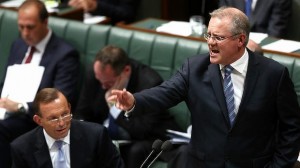 This country via its elected government has moved to do the unthinkable.
This country via its elected government has moved to do the unthinkable.
While we all thought that our government was already dealing out extraordinary cruel treatment to people who have had to leave everything and seek asylum in Australia, the Immigration Minister has proposed more foul legislation for Parliament to consider.
The Sustainable Sites Initiative (SITES™) is a program based on the understanding that land is a crucial component of the built environment and can be planned, designed, developed, and maintained to protect and enhance the benefits we derive from healthy functioning landscapes. Sustainable landscapes create ecologically resilient communities better able to withstand and recover from episodic floods, droughts, wildfires, and other catastrophic events. They benefit the environment, property owners, and local and regional communities and economies.
On Exhibit at Parliament House in Canberra are the commissioned photographs by Anna Zahalka (click here). The photographs are of the staff who are normally behind the scenes and whose work is vital to so many operations within the building.
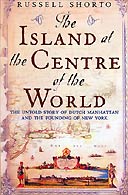 Surely the citizens of the USA would have by now have worked out the history about their first colonists.
Surely the citizens of the USA would have by now have worked out the history about their first colonists.
They probably thought so until the research behind this book surfaced and now they can read about the real history from this author, Russell Shorto.
This book is the precursor to Russell Shorto’s later book, Amsterdam, reviewed earlier – click here. Both are fascinating reads.
Continue reading Manhattan: The Island at the Centre of the World
 A report on that the wake up call may at last have been heard by some of the energy suppliers.
A report on that the wake up call may at last have been heard by some of the energy suppliers.
As the reality hits home, some energy companies are realising that coal based energy may not be as a sustainable business model as the proposed by Australia’s foolish Prime Minister.
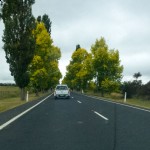 I refer to a former post (click here) in which I provided commentary about trees in several local location.
I refer to a former post (click here) in which I provided commentary about trees in several local location.
One key story was, and remains, the special lines of trees on the eastern and western entrances to Braidwood, in southern New South Wales.
Dealing with contemporary planning agencies has become a very stressful task for any person with concerns for their immediate and future urban environments.
Always good to check if any Australian City Councils are taking actions and setting targets despite the dangerous attitude of our Federal Governments.
Melbourne City Council has an Urban Forest Strategy to increase markedly its tree coverage across the city (remembering this is the inner city council – who knows what the rest are doing!).
There is no doubt that the City of Sydney and its harbour are magnificent to behold. (click on the photo to enlarge). The mix of built structures really makes for a view that demands you take the time to stare, contemplate and to just enjoy it for as long as it takes. However…..
(part of the series on the 2014 Environmental Design Research Association (EDRA) conference
“Urban agriculture is a phenomenon today,” said Farham Karim, an architectural historian at the University of Kansas, at the Environmental Design Research Association (EDRA) conference in New Orleans. Upwards of 70 million people are now involved around the globe — on Farmville, at least, the popular game app, he laughed. But, in reality, there are many tens of millions farming on the ground, too. With all the growing interest, Karim played devil’s advocate, wondering: is urban agriculture scalable? And who is going to be doing all this urban farming? And if we know it’s not a cost-effective solution for solving the world’s food problems, why the persistent interest?
click here for the full article.
————————————
Paul Costigan, 17 June 2014
I have stayed in many hotel rooms in many cities and towns. The experience of being in a hotel room, although now it is mostly apartments, is usually enjoyable but always with a tinge of weird. You enter this borrowed space and establish your presence while always being aware of the temporary nature of your stay.
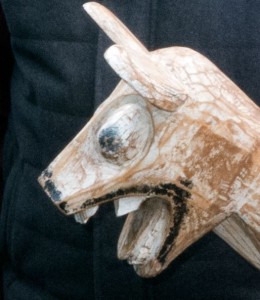 We live in a street that is inhabited by many dogs. Nearly every neighbour, near and far, has a pooch.
We live in a street that is inhabited by many dogs. Nearly every neighbour, near and far, has a pooch.
Most of these animals are quiet. Full credit to their owners. But we have the honour of having a couple that do let their presence be known with some barking. I have posted before about not so nice dogs and their owners. (click here) Continue reading Our Dog Shakey
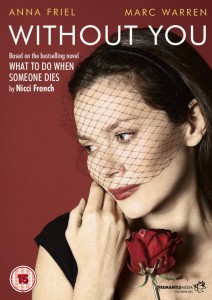 This three-part mini series was viewed in one sitting on a cold and wet Saturday evening.
This three-part mini series was viewed in one sitting on a cold and wet Saturday evening.
The story’s focus is how a married woman copes with the sudden death of her husband of 12 years. To that add that she quickly has doubts about the car accident. She has to also deal with the doubts and stories about whether he was being unfaithful.
There is no doubt that the City of Sydney and its harbour are magnificent to behold. (click on the photo to enlarge). The mix of built structures really makes for a view that demands you take the time to stare, contemplate and to just enjoy it for as long as it takes. However…..
 At the seminar at the National Gallery of Australia, the Indonesian artist FX Harsono made a presentation as an Indonesian of Chinese decent who is now researching and making art about the treatment of the Chinese communities in the early days of the Indonesian republic.
At the seminar at the National Gallery of Australia, the Indonesian artist FX Harsono made a presentation as an Indonesian of Chinese decent who is now researching and making art about the treatment of the Chinese communities in the early days of the Indonesian republic.
There’s a fantastic video on exhibition in which FX Harsono deals with his Chinese name, in that he is writing it continuously while other forces are washing it away.
In recent weeks and months there have been several significant development proposals announced by the territory (ACT) government in Canberra. If all the government’s ambitions come to fruition then residents about to witness some very serious alterations and additions to the make-up of several parts of the inner city urban fabric.
Australians can only wonder what the President thought about after having his conversations with the Prime Minister of Australia knowing that this is the man who proudly said climate change is crap.
In recent weeks and months there have been several significant development proposals announced by the territory (ACT) government in Canberra. If all the government’s ambitions come to fruition then residents about to witness some very serious alterations and additions to the make-up of several parts of the inner city urban fabric.
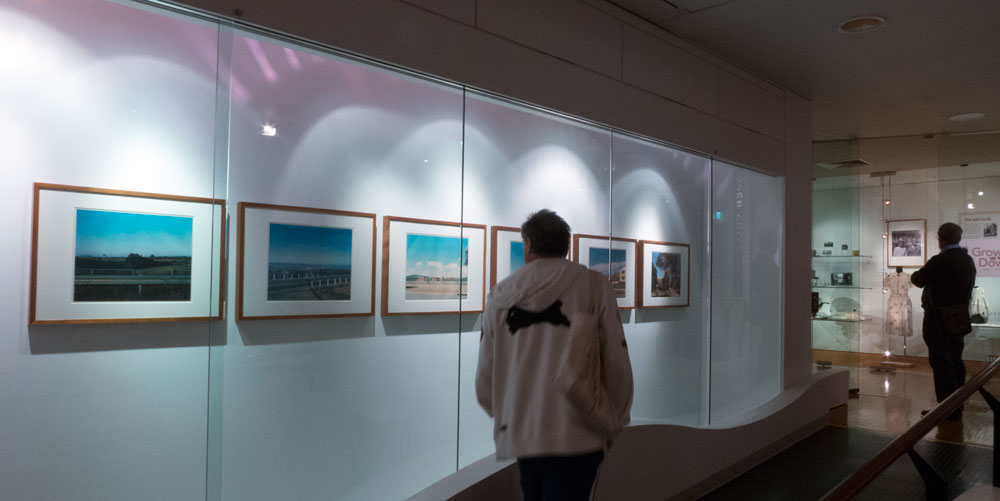
It was while visiting the Canberra Gallery for another exhibition that we spotted these six works by the artist/photographer Ian North. On exhibition were colour photographs from Ian’s suite of 24 images, the Canberra Suite Series (1981).
Silent rooftop wind turbines could generate half of a household’s energy needs
Over the years I have ventured into many exhibitions on Australian architecture. Most have been so badly put together that to call them boring is an understatement. This is not to say that the architecture is the problem, it is clearly that bodies such as the Institute of Architects know how to talk themselves but have little idea of how to market to the wider general public.
It should always be celebrated when a city council looks after its city parks. The property and development lobbies of this world see these public spaces as potential for profit-making development sites and would be always on hand to lobby for any reduction such public open spaces. Prince Alfred Park in Surrey Hills in Sydney has just benefited from a wise city council that has invested in some upgrades on this fabulous inner city parkland.
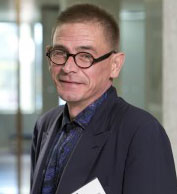 Several months back there was an article by Christopher Vernon, of the University of Western Australia, putting forward the background and argument for a permanent memorial in Canberra for Walter Burley Griffin and Marion Mahony Griffin. Click here for that article.
Several months back there was an article by Christopher Vernon, of the University of Western Australia, putting forward the background and argument for a permanent memorial in Canberra for Walter Burley Griffin and Marion Mahony Griffin. Click here for that article.
There are various things scattered around Canberra that tell their story.
Continue reading Walter Burley Griffin and Marion Mahony Griffin
Silent rooftop wind turbines could generate half of a household’s energy needs
 It was while visiting the Stills Gallery in Sydney to see the works by Mary Ellen Mark, that I was totally struck by the ambiance of a photograph titled: The Damm Family in Their Car, Los Angeles, California, USA, 1987. (it is reproduced larger below)
It was while visiting the Stills Gallery in Sydney to see the works by Mary Ellen Mark, that I was totally struck by the ambiance of a photograph titled: The Damm Family in Their Car, Los Angeles, California, USA, 1987. (it is reproduced larger below)
Besides the stand out nature of the total composition, the car, the children, the hands around the woman, it was the faces on the mother and the daughter that glued me for much more than the standard time one usually spends with any work in an exhibition. Then I could not help but return to it several times.
How are we being served by our professions in their provision of buildings and landscape projects? The highest priority for the future of the planet remains that every action be taken in the context of addressing climate change adaptation.
Consumer and climate experts say extreme weather could raise insurance premiums and lower property values. This is something still being ignored as too many people have allowed the federal government misinformation campaigns to distract them from addressing these devastating issues. click here
—————————
Paul Costigan 5 June 2014
National Gallery of Australia
Garden of the East: photography in Indonesia 1850s–1940s

21 February – 22 June 2014, free entry to exhibition (note the exhibition is on two floors)
Continue reading Garden of the East: photography in Indonesia
One of the unfortunate outcomes of the marketing of our major art galleries is that so much emphasis has been placed on the special and blockbuster exhibitions. This form of marketing may be assisting with budgets, but this success is at the cost of letting people know about the galleries’ own collection exhibitions.
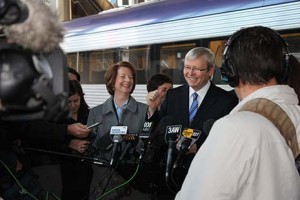 There’s a good book review uploaded to the online site Inside Story. The book is The Inside Story of Climate Politics Under Rudd and Gillard.
There’s a good book review uploaded to the online site Inside Story. The book is The Inside Story of Climate Politics Under Rudd and Gillard.
Andrew Dodd provides a thorough overview of Philip Chubb’s insider account of the demise of Kevin Rudd’s climate scheme.
His review males the book to be essential reading. My stack of books is already too high so I have provided this review as a way of tempting others. Click here.
Across Australia there are stand out examples of campus design amongst many of our universities. In more recent years I have had reason to visit campuses in all the states and back here in Canberra and have been constantly impressed with some of the architectural and landscape work. In most cases I have been positively impressed with the work and in others I have been taken aback.
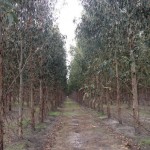 Beware of all that green-wash.
Beware of all that green-wash.Yet again there’s a nice piece on The Conversation about how we need to be far more serious about carbon. It also points towards the use of Green-Wash by corporations to allow them to continue with business as usual.
I have commented on this on our other blog – The Sustainable Settlements Institute – click here
In 2014, contemporary car design is fairly mundane. Most car designers are pumping out things that are not attractive. Cars today seem to be suffering from either a lack of design or have a combination of tricky features pretending to be some form of design. So many cars today are simply very boring.
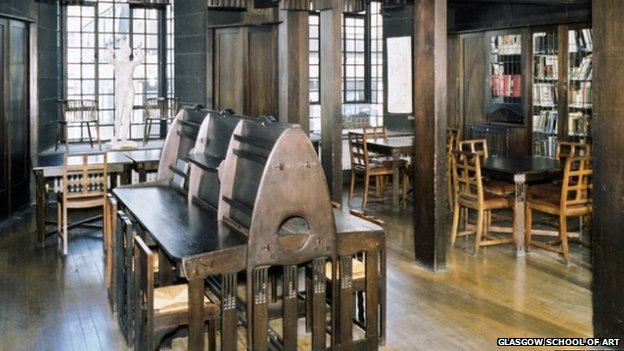
The iconic library at Glasgow School of Art has been lost in the fire which swept through the Charles Rennie Mackintosh building on Friday. click here
And an interesting piece from a researcher – click here.
from The Guardian, Designing cities and factories with urban agriculture in mind. The Netherlands offers inspiration for designers looking to create environments that harvest water, energy and nutrients.
Urban farms are transforming inner city spaces – rooftops, infrastructure, streetscapes, building skin – into generative ecologies that support the lives of people, and pollinators too. They are bringing into cities, and into plain view, the natural systems that sustain urban life
Once upon a time in the not too distant past a gathering of Australian State/Territory Premiers and the Prime Minister looked like this image below.
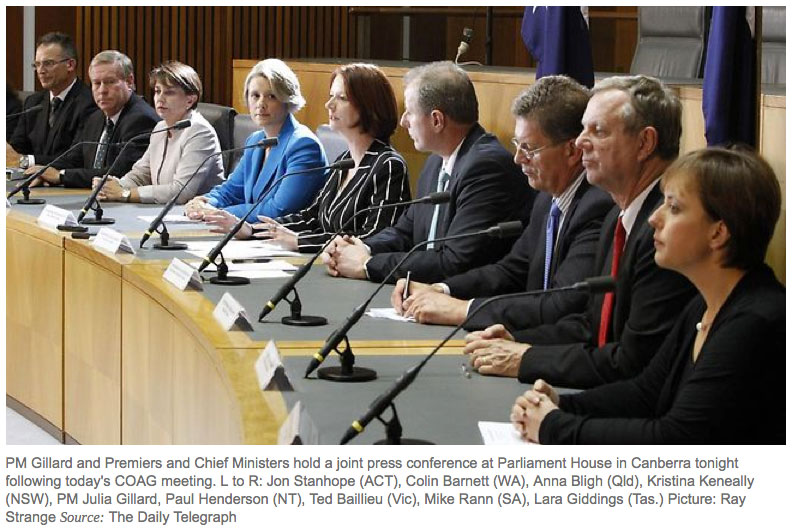 and now? Continue reading Equity in Australian Political Leadership
and now? Continue reading Equity in Australian Political Leadership
Once upon time Canberra had heaps visual arts galleries to visit on weekends. Now there are but a few left. Last weekend I visited two publicly funded visual art spaces; being the M16 Gallery in Griffith and the Canberra Contemporary Art Space (CCAS) in Braddon. I can happily report that things are looking good and suggest you get out there and see for yourself just how both of these are traveling.*
 This exhibition of the photography of Sue Ford (1943 – 2009) at the Victorian State Gallery (National Gallery of Victoria*) is a curious one. Click here – for their media statements.
This exhibition of the photography of Sue Ford (1943 – 2009) at the Victorian State Gallery (National Gallery of Victoria*) is a curious one. Click here – for their media statements.
As an opening statement I have to say that I did not find this exhibition as satisfactory as I had anticipated. Parts of the exhibition worked reasonably well, whereas other sections look as if someone was not sure what to do with the work, or that maybe they did not understand Sue Ford’s work.
 Australia has a brilliant history of photography. There is a host of names that have been well published and are well documented.
Australia has a brilliant history of photography. There is a host of names that have been well published and are well documented.
There are also many who had a significant contribution in their day but who have slipped out of view.
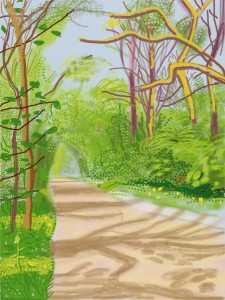 I have been a follower of David Hockney’s work from the early 1980’s, when I first read a book on his early UK works. Since then I have followed his merry career as he has switched medium and taken on a range of subjects.
I have been a follower of David Hockney’s work from the early 1980’s, when I first read a book on his early UK works. Since then I have followed his merry career as he has switched medium and taken on a range of subjects.
In general I like most of his work and remain intrigued by lots of the other. It was with interest that I spotted this London exhibition, all done on the iPad, listed online. Have a look and open up the images in large format. There is definitely something interesting going on here. Hope one day to get to London again to see some of these.
Click here for the exhibition notice and then click ‘full screen’ for the slide show.
Photographer, Fabrice Fouillet, has a series of images of Colosses that were created to dominate and dwarf the landscape and buildings around them.
This year, Russ & Daughters, the acclaimed appetizing institution on the Lower East Side, turns a hundred years old. To celebrate the occasion, the fourth-generation co-owners are giving customers a place to sit.
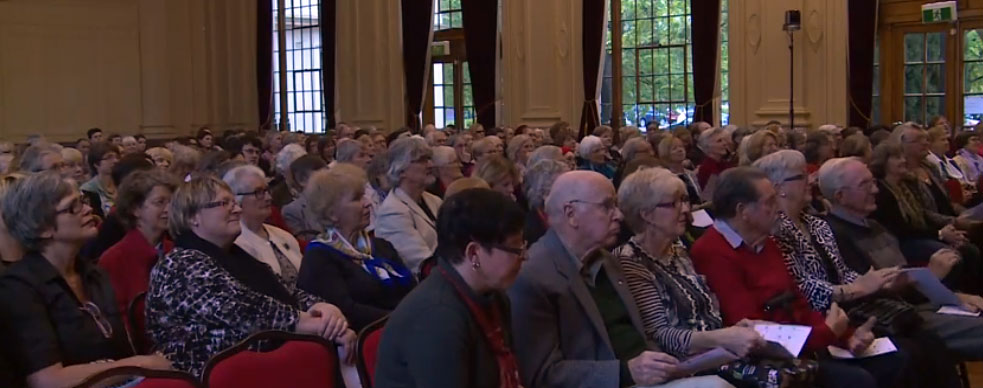 Held in the Albert Hall, Canberra, on 26 March 2014.
Held in the Albert Hall, Canberra, on 26 March 2014.
The proposition was that ‘Australia doesn’t need Women’s History Month’. Continue reading Australian Women’s History Forum
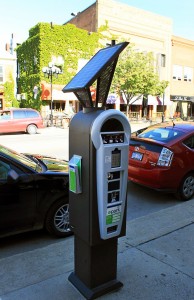 There are all sorts of stories in circulation in Canberra as a result of the decision to introduce paid parking for all areas within the Parliamentary Triangle. This has a big impact on those who work in the area. Some public servants are devising clever tricks to continue to have free parking.
There are all sorts of stories in circulation in Canberra as a result of the decision to introduce paid parking for all areas within the Parliamentary Triangle. This has a big impact on those who work in the area. Some public servants are devising clever tricks to continue to have free parking.
This will also mean that visitors will now have to pay to visit the national institutions and have limited time to visit. This could be a marked change in how visitors regard the national cultural institutions. I know as a local, it will mean less visits to these institutions.
I have just come back from Brisbane and had the wonderful experience of seeing more photographs by Anna Carey. I have mentioned her work previously — click here for that post.
 Do you want to see something really really scary?
Do you want to see something really really scary?
The Monthly has published an excellent article of the Abbott crowd and how his old boys are in charge. The image on the cover is worrying simply because it is so factual. The artist has captured their collective personalities far too accurately.
Do not show this image to children. Click here.
That parts of Brisbane are ugly and the local government has allowed this to happen
Part Six of Six – some final words
See previous: Part One – Part Two – Part Three – Part Four – Part Five
Brisbane definitely would not win any ‘most attractive city award’.
That parts of Brisbane are ugly and the local government has allowed this to happen
Beauty in urban development is something we should insist on!
Part Five of Six – South Bank and West End.
Links to all: Part One – Part Two – Part Three – Part Four – Part Five – Part Six

There is no doubt that there are aspects of Brisbane that a far more interesting than the city centre. South Bank and the West End are such places. South Bank Parklands have been managed well for years up till now – but I am not so sure about the current management.
South Bank is a place for leisure, for the family, for picnics, for food and cafes and the cultural centres, for events, and especially for culture such as visits to the state gallery.
Any major city or city district has ambitions to attract tourists. When it works well everyone prospers and the locals can be happy. Tourists arrive and spend money.
That parts of Brisbane are ugly and the local government has allowed this to happen
Beauty in urban development is something we should insist on!
Part Four – nearby the Brisbane Central District
Links to all: Part One – Part Two – Part Three – Part Four – Part Five – Part Six
There are aspects of Brisbane are beautiful. The river is magic. The photo above, taken some years back illustrates this. The evening lights enhance the unfortunate placement of major roads along the river’s edge. These freeways are transport engineering successes but are barriers to any hope of joining the city to the river.
Brisbane’s South Bank Corporation’s lack of equity in their management
It was while researching the background on my pieces on Brisbane and in particular on the South Bank Corporation, that I was checking on its corporate status when I came across a rude piece of evidence on the corporation. Continue reading Brisbane’s South Bank Corporate Equity
That parts of Brisbane are ugly and the local government has allowed this to happen
Beauty in urban development is something we should insist on!
Part Three – Brisbane Central District
Links to all: Part One – Part Two – Part Three – Part Four – Part Five – Part Six
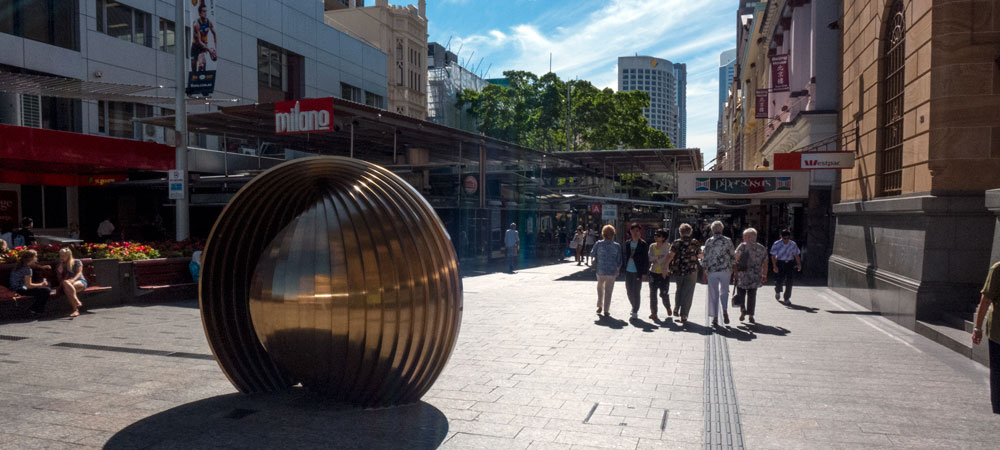
The central area of the city of Brisbane has evolved into a modern city with many historic buildings surviving. These heritage buildings are now surrounded by an over abundance of glass and concrete walls of taller office building. It is not a pretty sight.
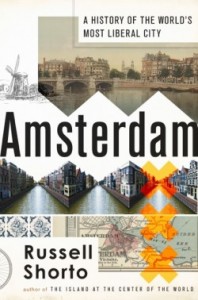 If you have any interest in liberal thinking, tolerance and the enlightenment, then this is a book you must read.
If you have any interest in liberal thinking, tolerance and the enlightenment, then this is a book you must read.
Given the threats to these values almost daily by the current Australian government, it is a must to take time out and do a reality check on just how far backwards these elected clowns are trying to take us.
While obviously about the city, this book is really a celebration of the people and their influence on the whole western world.
That parts of Brisbane are ugly and the local government has allowed this to happen
Beauty in urban development is something we should insist on!
Part Two – arriving from the airport
Links to all: Part One – Part Two – Part Three – Part Four – Part Five – Part Six
There’s an article in the Guardian by George Monbiot titled:
Can you put a price on the beauty of the natural world?
Those who reduce nature to a column of figures play to an agenda that ignores its inherent value – and seeks to destroy it
To which one response online was: Great article George.
There was much ado about this whole precinct development when it was being built and this continues through to today. Having visited the site a few times now, to meander, to eat, to meet for coffee and the occasional business, I have to say that it is a very mixed result. It is worth a visit on a busy day to see for yourself. But it does not match some of the rhetoric that has been put about – click here for an example of some project-porn spin*.
That parts of Brisbane are ugly and the local government has allowed this to happen
Beauty in urban development is something we should insist on!
Part One – commenting on the News and its response to Alain
Links to all: Part One – Part Two – Part Three – Part Four – Part Five – Part Six
A mild storm recently broke in the media around comments made by Alain de Botton. To view one Brisbane local news piece on this and see Alain respond – click here. I was alerted to there being something wrong here when certain commentators responded. Oh the media just did not read his new book on the media!
The same crowd that managed to assist in bringing down the Rudd Labor government when the government proposed a tax on the riches being ripped out of the country, have just introduced an online promotion to bring together those in favour of Big Coal and its future.
Sadly for Big Coal have entered the democratic world of online chats and twitter. The full story is told in the Guardian – click here. Enjoy and chuckle at the expense of the not so bright chiefs of Big Coal.
There’s evidence appearing about the take up of solar may in fact continue to expand and become fully part of the country’s source of electricity. This is amazing given the on-going vicious and well-funded campaigns being carried by Big Coal and their allies in the present Australian Government.
The next big trick is to get solar to be a key issue at the coming elections, both state and federal. With many of the subsidies now being removed, those who have solar are starting to notice how they are being duded by the Big Coal electricity companies who do not want solar to succeed.
There’s a very good article online titled: Rooftop solar may be ‘sleeping giant’ of Australian politics – click here. It is worth a read to gain an update on this debate and some facts on the current rip offs underway.
———————————
Paul Costigan 14 April 2014
A piece from the New Yorker that again points out that the time for action on climate change is now but that inaction has actually become the norm. So many politicians have come to office on the back of statements on climate change, yet here we are in 2014 with no significant actions being undertaken to realistically deal with climate change.
The really sad part is, as pointed out in the article, the longer we allow our national governments to sit on their hands, then the harder it will be in the coming years as the problems will have worsened and become far more difficult to deal with. It seems we are all waiting for someone else to solve this problem.
Eventually of course, someone or at least something will. That will be the planet that rejects the dangerous race called humans.
Here’s the link to the New Yorker article – click here
From the Independent Australia Blog comes the warning about food security.
The latest report from the United Nations Intergovernmental Panel on Climate Change paints a grim picture for the future of Australia’s food security.
Food security is an issue that must be carefully and comprehensively addressed by our government as a matter of critical forward planning. And it must be given priority over trade “arrangements” that may have attractions now, but which will limit the government’s policy options when current circumstances change, which all indicators point to being soon.
These comments not are about the exhibitions of the War Memorial. These are comments about the building and recent additions.
Many times the expression is used when an architect is talking about a building, about how their architecture fits into the landscape. In most cases this proves to be just false architectural spin. However there is one building here in Canberra that does sit beautifully with the landscape. That building is the Australian War Memorial in Canberra
In a blog on the Huffington Post, the authors point out the obvious. That is, obvious to those who are looking and care as opposed to too many who are presently making decisions about cities and sustainability.
The evidence is there. Design well and all the benefits can follow. Design badly, which is too common, and all the inequities and unsustainable practices come to the fore. As the authors say:
Well-designed cities generate jobs, innovation, and economic growth for all. But when designed poorly — with too much sprawl, waste, and inefficiency — they can divide cities and exacerbate pollution, inequality, and political instability. Moreover, poor design has long-term consequences given that urban infrastructure often lasts decades. Continue reading Sustainable Cities
The Huffington Post presents a wonderfully optimistic report about a city that is often regarded as being a terrible example of urban development. I disagree. It has many things wrong with it but if you spend time there you can see that there are some really great things happening. All cities have their problems and many do not much to boast about.
As reported many times, the current mainstream media has become part of the problem in encouraging the world to act urgently on climate change.
In Australia it has become painfully obvious that media, such as our own ABC, has gone far too far in providing what they term as ‘balance’. The voices of the scientists and the weight of their reports and the mountains of evidence is ‘balanced’ by the time given to complete skeptics and their lack of scientific evidence.
City main street networks show a drastic shift away from historic patterns of human-scale design
Have you ever wondered why some places seem built for automobiles as opposed to humans?
In a recent study, J. Alexander Maxwell and fellow researchers from the University of Strathclyde’s Urban Design Studies Unit find evidence that before the rise of the automobile, cities developed on a walkable “human” scale, with main streets that rarely exceeded 400 meters (a little more than 437 yards).
Along with Charles R. Wolfe, they argue that this uniformity reveals an underlying pattern to pedestrian city settings, which should be considered in contemporary urban design and policies.
This is a proposal to enhance some present green infrastructure within inner north Canberra.
The North Canberra Greenway could be formed by linking and then enhancing the present green infrastructure elements throughout inner north Canberra.
Australia has a very mixed understanding and relationship with wetlands. I happen to be fortunate to live close to one. This came into existence just a couple of years ago when the local government transformed a disused and degraded parkland into a wetland attached to an old style concrete drain.
The Huffington Post presents a wonderfully optimistic report about a city that is often regarded as being a terrible example of urban development. I disagree. It has many things wrong with it but if you spend time there you can see that there are some really great things happening. All cities have their problems and many do not much to boast about.
there’s so many issues
 This government draws its strength from others and from their belief in the right to be in government. This government does not care what is being said by people such as those in the March in March protest. This government would view the protesters as being the problem, not their messages. It is going to be a difficult few years living in a country where democracy is being trashed.
This government draws its strength from others and from their belief in the right to be in government. This government does not care what is being said by people such as those in the March in March protest. This government would view the protesters as being the problem, not their messages. It is going to be a difficult few years living in a country where democracy is being trashed.
It is worth checking the latest list of The Rabbott’s national wreckage – click here.
———————————————–
Paul Costigan, 5 April 2014
Australia has a very mixed understanding and relationship with wetlands. I happen to be fortunate to live close to one. This came into existence just a couple of years ago when the local government transformed a disused and degraded parkland into a wetland attached to an old style concrete drain.
This wetland was part of a series of several wetlands installed into the inner northern suburbs of Canberra. Our hope is that one day the same local government will take on the challenge of enlarging the nearby wetlands to include much of the concrete drains through the inner northern suburbs. This would then be then be a linear park and wetland that would wind its way through several suburbs and increase the amount of green infrastructure. It would also be a wonderful walkway and increase the chances of locals getting out and walking.
 Feathers have been quietly ruffled locally as the ACT Government (local government for Canberra) has announced it is to introduce a new proposal that would see identified precincts developed using a fast-track development process. This change to planning has been reported on in the Canberra Times and should be read before reading my comments that follow below – click here
Feathers have been quietly ruffled locally as the ACT Government (local government for Canberra) has announced it is to introduce a new proposal that would see identified precincts developed using a fast-track development process. This change to planning has been reported on in the Canberra Times and should be read before reading my comments that follow below – click here
What follows was edited down as a ‘letter to the editor’ on this subject.
Continue reading Canberra Urbanity – Fast Track Developments
There’s many a piece of research and publication about the links between access to parks and people’s health and wellbeing. Any urban area that includes ample public green spaces will always be sought after and the benefits are evident in the community attitudes towards their residential areas. Parks enhance the sense of community.
Most Australian urban areas usually have had parks provided as part of the urban infrastructure. However in too many cases these parks and open spaces end up not being maintained well and sadly many also become places of neglect.
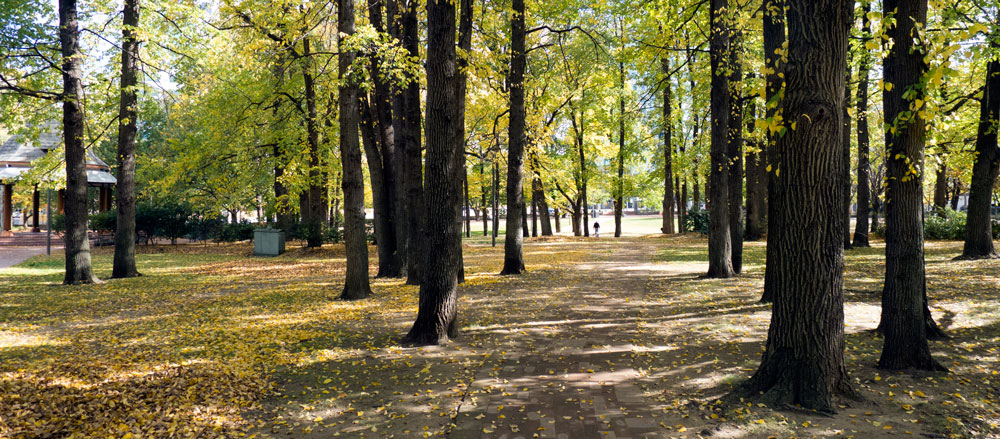 There’s many a piece of research and publication about the links between access to parks and people’s health and wellbeing. Any urban area that includes ample public green spaces will always be sought after and the benefits are evident in the community attitudes towards their residential areas. Parks enhance the sense of community.
There’s many a piece of research and publication about the links between access to parks and people’s health and wellbeing. Any urban area that includes ample public green spaces will always be sought after and the benefits are evident in the community attitudes towards their residential areas. Parks enhance the sense of community.
 When women earn high positions and speak up for their professional goals, they encourage more to do the same. There’s an online article by Barbara B. Kamm in which she says: Continue reading Equity and Corporate Boards
When women earn high positions and speak up for their professional goals, they encourage more to do the same. There’s an online article by Barbara B. Kamm in which she says: Continue reading Equity and Corporate Boards
Neon Lights and The Museum of Neon Arts
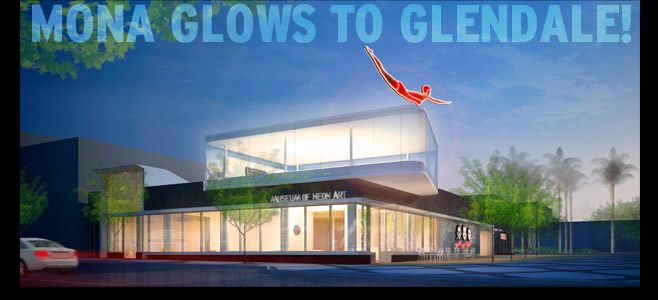 I happen to like all things neon. I have been fascinated by neon lights for years. We have twice visited the Museum of Neon Art in LA; noting that they have moved again to another new home, this time in Glendale. (above)
I happen to like all things neon. I have been fascinated by neon lights for years. We have twice visited the Museum of Neon Art in LA; noting that they have moved again to another new home, this time in Glendale. (above)
Here’s a few YouTube presentations on Neon (see below):
Two reports on the rise in the use of public transport in the USA.
First – set out below is a March 2014 media statement from the On March 10, 2014 by the American Public Transportation Association. or – check out the original on the association’s own web site – click here.
The second is an article in the New York Times, March 10 2014: Use of Public Transit in U.S. Reaches Highest Level Since 1956, Advocates Report – click here
Flown anywhere lately? You were not alone – You had company up there.
A data visualization of Air Traffic in Europe was created from real flight data. It shows the air traffic which flies on a typical summer day and highlights the intensity of the operation in Europe – an operation which runs 24x7x365.
Canberra had until recently an envious program of public art under the previous Chief Minister, Jon Stanhope. The city has a mix of public art. That’s the nature of the beast. But!